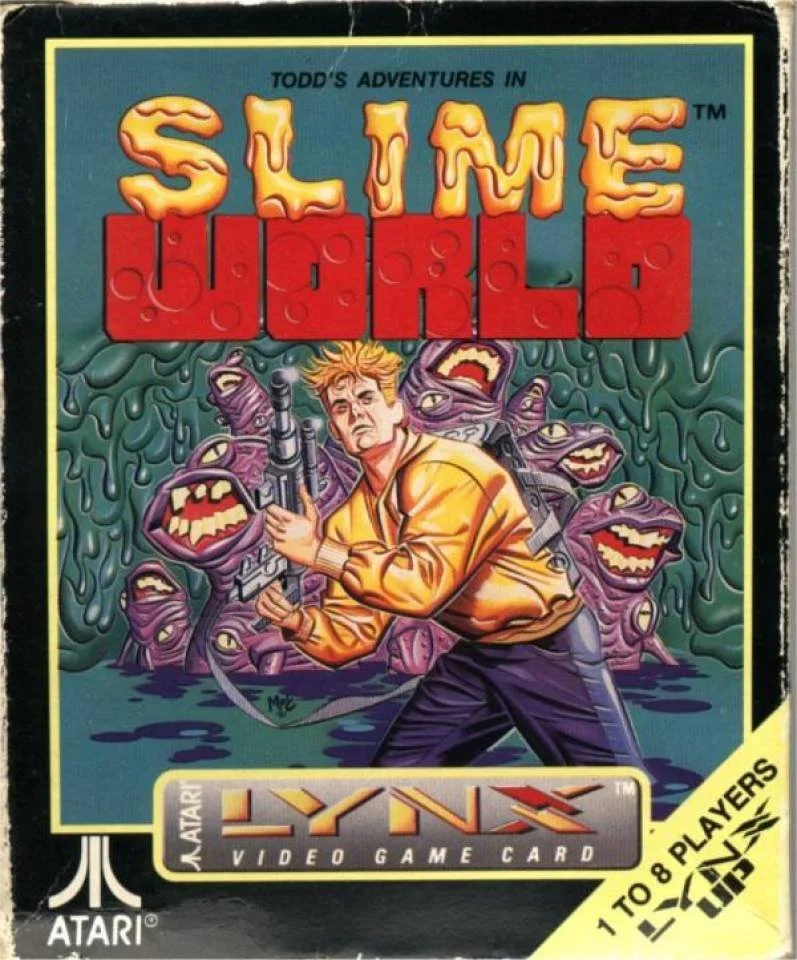Every Co-op Game on the Atari Lynx
Some kids had the Game Boy. Others had the Game Gear. But a few lucky ones had the Atari Lynx—a powerful handheld with some surprising co-op titles.
In this post, I’m diving into every single co-op game on the Atari Lynx. Let’s jump into it.
Basketbrawl
Think basketball meets beat-‘em-up. Sounds fun, right?
You can: Punch opponents, pick up weapons, and stab people mid-game.
Problem: It’s just not a good game. Bad sound, clunky controls, and not much fun to play.
Also available on the Atari 7800... where it’s still not worth playing.
Bill & Ted’s Excellent Adventure
A unique co-op experience on the Lynx. It plays more like an RPG or a Zelda-style adventure—minus the combat.
What you do: Split up and explore areas to collect musical notes.
Pros: Infinite lives, password system, and the ability to run.
Cons: The objective isn’t always clear, and progress can feel slow.
Still, it’s one of the most interesting and unique co-op games on the system.
Double Dragon
Yes—Double Dragon on a handheld. And it’s shockingly good.
Pros: Faithful to the arcade visually, two-player co-op, minimal slowdown.
Unique Feature: Players can move independently (not stuck on one screen).
Downside: The controls are awkward.
Still, it’s one of the best home ports from that era. Recommended!
Gauntlet: The Third Encounter
An exclusive Lynx title, released in 1990.
Classic formula: Destroy enemies, collect keys, find the exit.
Unique Twist: Vertical mode with quirky character classes (Samurai, Punk Rocker, Nerd?!).
Up to 4 players (though I’ve only played it with two).
It’s not the best Gauntlet game, but it’s the most overlooked.
Joust
The classic arcade co-op game from 1982 makes its way to the Lynx.
Gameplay: Tap to fly, land on enemies, grab the eggs.
Pros: Portable version of an iconic game.
Cons: By 1992, there were many other ports—and this one doesn’t stand out.
Still fun, just maybe not the best version out there.
Raiden
A vertical-scrolling shooter originally from arcades (1990).
Lynx version: Decent and colorful, with vertical screen support.
Issue: I kept having communication errors trying co-op.
Status: Still unclear if that’s hardware-related or just a Lynx issue.
Let me know if anyone else has experienced this!
Rampage
Another arcade classic on the Lynx. Released in 1990.
Playable monsters: George, Lizzie, Ralph—and a new giant rat named Larry.
Gameplay: Destroy buildings, eat people, smash stuff.
Downside: It gets repetitive.
But visually? Impressive. A solid port worth checking out.
Todd’s Adventures in Slime World
Originally a Lynx game in 1990, later ported to Genesis and PC Engine CD.
Co-op up to 8 players! (I’ve only done two. Someday…)
Unique touches: Get covered in slime, jump into water to clean off.
Power-ups: Triple shot, slime gun, bombs, jetpack.
Cons: Awful music, slow gameplay.
Still, it’s weird and charming enough to have a soft spot in my heart.
Xenophobe
Another great arcade port with Lynx-exclusive twists.
Up to 3 players co-op.
Cool feature: One player can even play as an alien.
Gameplay: Explore ships, destroy aliens, and find the exit.
This is probably the best home port of Xenophobe. Highly recommended.
Xybots
Possibly the first third-person shooter—and one of my favorite Lynx games.
Unique for Lynx: Each player gets their own screen. Split up or team up.
Progression: 52 levels, earn money, buy upgrades.
Favorite feature: Exploring the maze solo or together works perfectly.
Just make sure to plug in your AC adapter. The battery drain is brutal.
🎯 My top pick? Xybots. It’s a hidden gem in the world of co-op gaming.
Zarlor Mercenary
Our final game is a Lynx-exclusive vertical shooter from 1990.
Up to 4 players co-op.
Visuals: Genuinely impressive—feels like a Genesis game at times.
Choose your pilot: 7 unique characters, each with different weapons.
Gameplay: Shoot enemies, earn cash, upgrade weapons after each mission.
It’s short (6 levels), but tough. I’d recommend it over Raiden, especially since I couldn’t get Raiden to work in co-op.
Final Thoughts
The Atari Lynx might not have had the market share of the Game Boy or Game Gear, but it carved out a niche for itself with surprisingly solid co-op games. From forgotten exclusives to impressive arcade ports, these titles are worth revisiting—especially if you can get your hands on a second system and a link cable.
Have a favorite Lynx co-op game I missed? Let me know—I’m always looking for more to explore!






























